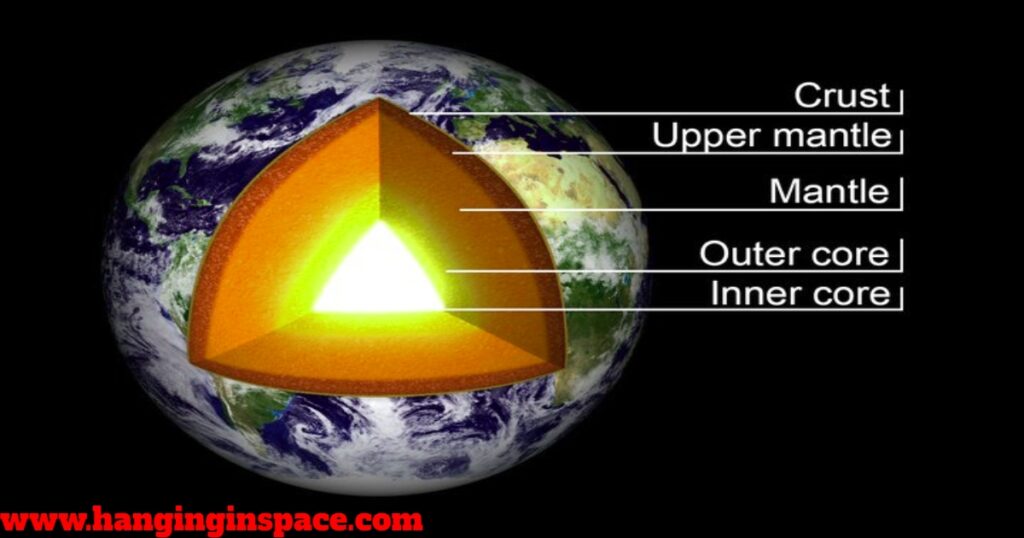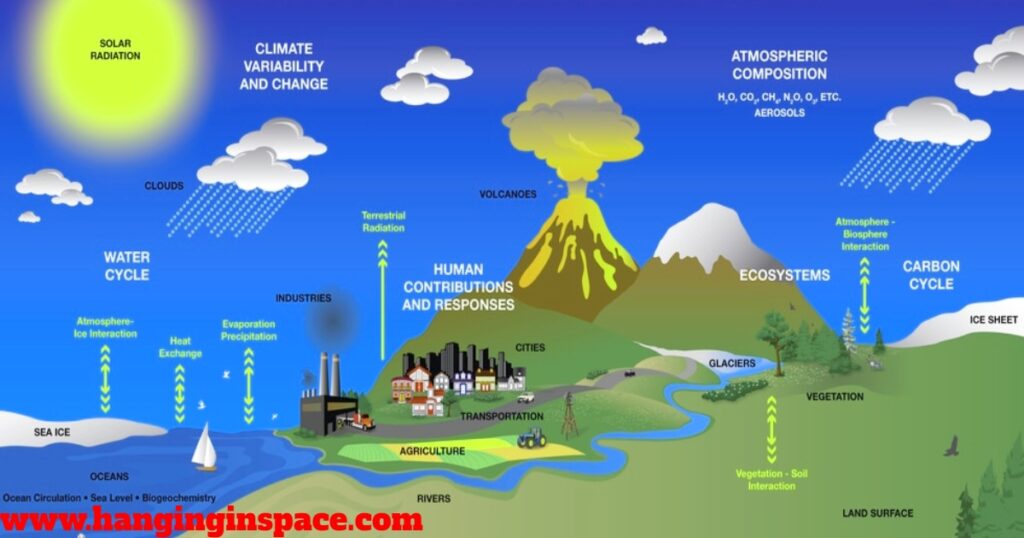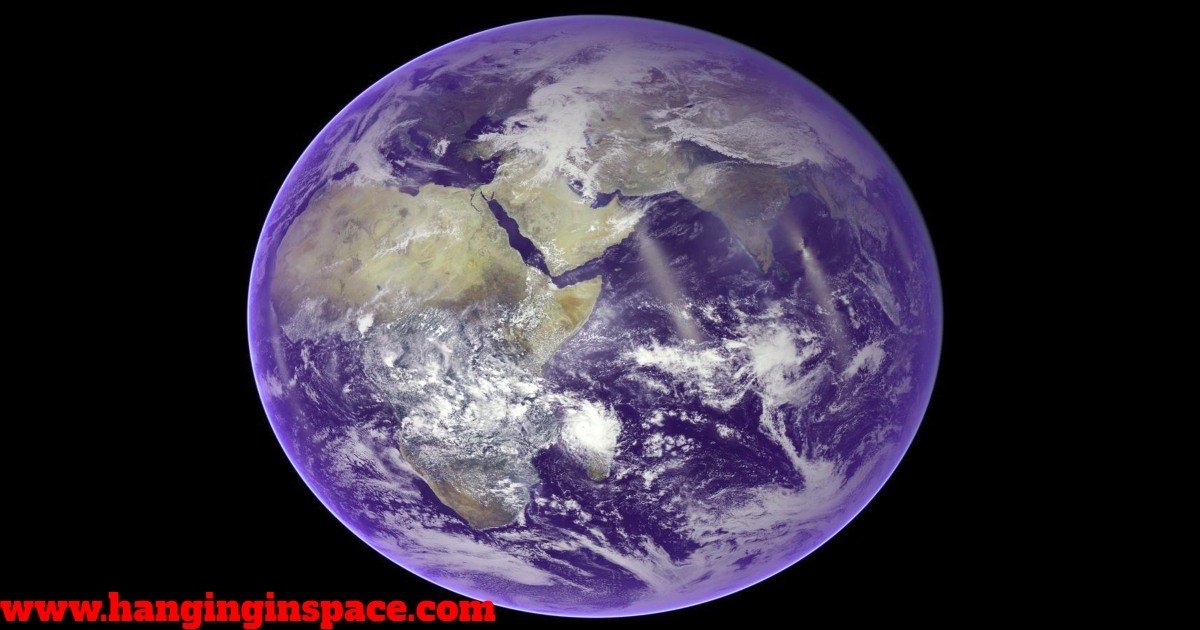The Earth is our home. It is the third planet in our solar system, which revolves around the Sun. It’s a planet teeming with life and holding the key to humanity’s existence. Unlike other celestial bodies in our solar system, it possesses unique characteristics that have fostered the development of diverse ecosystems and continue to sustain life.

What is the Size of the Earth?
Earth’s radius measures 6,371 kilometers (3,959 miles). Earth’s diameter spans 12,742 kilometers (7,918 miles). Earth’s circumference extends to 40,075 kilometers (24,901 miles).
What is the Mass and Volume of the Earth?
The Earth has a mass of approximately 5.972 × 10^24 kilograms (5.972 sextillion kilograms) and its volume is a staggering 1.08321 x 10^12 cubic kilometers (259.3 trillion cubic miles).
What is the Temperature of the Earth?
Temperatures on the Earth vary greatly depending on location, altitude, and weather patterns. However, the average global temperature is around 15°C (59°F). The atmosphere plays a crucial role in this regulation, trapping heat from the sun (the greenhouse effect) while also allowing some heat to escape back into space.
What is Earth’s Average Distance from the Sun & Moon?
The Earth’s average distance from the Sun is about 149.6 million kilometers (92.96 million miles) and its average distance from the Moon is about 384,400 kilometers (km).
How long does it take the Earth to Orbit the Sun?
It takes Earth approximately 365.25 days to orbit the Sun. This is also known as Earth’s orbital period.
How long does it take the Earth to Spin on its Axis?
The Earth spins on its axis in 24 hours. This is the length of a day on Earth.
Gravitational Field Strength:
The strength of Earth’s gravitational field is measured in terms of acceleration due to gravity, denoted by the symbol “g”. At the Earth’s surface, the standard acceleration due to gravity is approximately 9.8 meters per second squared (m/s²).
Escape Velocity:
The escape velocity to leave the gravitational pull of Earth is approximately 11.186 kilometers per second (km/s).
Earth has one Moon.
What is the Composition of the Earth?
The Earth is a complex tapestry of various elements, each playing a crucial role in its composition and the existence of life. Earth is composed of Iron, Oxygen, Silicate Minerals, Water and trace elements.
Iron and Oxygen:
These two elements, forming the core and mantle, respectively, make up a significant portion of Earth’s mass. The iron core, believed to be in a liquid state due to the immense heat and pressure, generates Earth’s magnetic field, which shields us from harmful solar radiation. Oxygen, on the other hand, forms the majority of Earth’s atmosphere and is essential for life as we know it.
Silicate Minerals:
The crust and upper mantle are primarily composed of various silicate minerals. These minerals, formed from the combination of silicon and oxygen with other elements like magnesium, aluminum, and calcium, contribute to the diverse geological features we see on Earth’s surface, from towering mountains to vast plains.
Water:
This seemingly simple molecule plays a vital role in shaping Earth’s landscape and supporting life. Liquid water, unique to Earth among the planets in our solar system, covers about 71% of the planet’s surface and is essential for countless biological processes.
What is the Interior Structure of the Earth?
The Earth’s interior structure consists of the inner core, outer core, mantle, & crust.

Inner Core:
This innermost layer, composed primarily of iron under immense pressure and temperature, is believed to be liquid, and it is responsible for generating Earth’s magnetic field.
Outer Core:
The outer core is also composed primarily of iron but is believed to be in a solid state due to slightly lower temperatures.
Mantle:
The thickest layer, the mantle, is composed of solid rock, primarily various silicate minerals. The movement of the mantle is responsible for plate tectonics, the driving force behind continental drift, earthquakes, and volcanic eruptions.
Crust:
The outermost layer, the crust, is the thinnest and most diverse in composition. It is further divided into continental crust, composed primarily of lighter rocks like granite, and oceanic crust, made up of denser basaltic rocks.
What does the Atmosphere of the Earth consist of?
The Earth’s atmosphere is made up of several layers, each with its own unique characteristics. Here’s a breakdown of the Earth’s atmosphere:
Troposphere:
The lowest layer, where weather phenomena like clouds, rain, and wind occur. This layer is also where most of the air we breathe resides.
Stratosphere:
The layer above the troposphere.
The temperature in this layer increases with altitude. It is also where the ozone layer is located, which protects us from harmful ultraviolet radiation from the sun.
Mesosphere:
The layer above the stratosphere. The temperature in this layer decreases with altitude. This layer is where many meteors burn up as they enter Earth’s atmosphere.
Thermosphere:
The uppermost layer of the atmosphere. The temperature in this layer can reach very high levels due to the absorption of solar radiation. This layer is also where auroras (northern and southern lights) occur.
Exosphere:
The outermost layer of the atmosphere. This layer is very thin and gradually fades into outer space.
The composition of Earth’s atmosphere is also important. Dry air (air that does not contain water vapor) is made up of about 78% nitrogen, 21% oxygen, and 1% argon. The remaining 1% is made up of trace gases, such as carbon dioxide, methane, and water vapor.
What is Earth’s Magnetosphere?
The Earth’s magnetosphere is strong and extends far into space, protecting the planet from the solar wind and cosmic radiation. It plays a crucial role in shielding Earth’s atmosphere and maintaining its habitability.
How is Earth’s Ecosystem?

The Earth has diverse ecosystems that support life. These ecosystems are complex networks of living organisms (biotic factors) interacting with their non-living environment (abiotic factors). From towering rainforests to sprawling deserts, each ecosystem boasts a unique set of plants, animals, and microorganisms that have adapted to thrive in specific conditions.
Sunlight fuels this remarkable system, providing energy for plants to grow through photosynthesis. These plants then become the foundation of the food chain, nourishing herbivores, which in turn are consumed by carnivores.
Decomposers break down dead organisms and waste, returning nutrients to the soil and maintaining the delicate balance of the ecosystem.
Human activities significantly impact Earth’s ecosystems. Pollution, habitat loss, and climate change pose serious threats to this delicate balance. Understanding and protecting these ecosystems is crucial for ensuring the health of our planet and the survival of its diverse inhabitants, including ourselves.
Earth’s Formation:
Our planet’s formation, estimated around 4.5 billion years ago, is believed to have been a violent and chaotic process. Scientists theorize that Earth formed from a swirling cloud of gas and dust.
The initial stage involves the gradual accumulation of dust and gas particles, drawn together by gravity. Over millions of years, these particles collided and merged, forming larger and larger bodies, eventually leading to the formation of Earth.
Formation of Earth’s Moon:
A theory suggests a Mars-sized object collided with the early Earth, ejecting a large portion of material into space. This portion of material eventually came together to form our Moon.
Earth is Continuously Evolving:
Earth is not a static entity. It is a constantly evolving planet, shaped by internal and external forces. Plate tectonics, driven by the movement of the mantle, continues to reshape Earth’s continents and oceans. Volcanic eruptions and weathering processes continue to modify the landscape, while the atmosphere interacts with the sun’s energy, influencing weather patterns and climate.
Earth as compared to Mars:
Earth Vs. Mars
| Feature | Earth | Mars |
|---|---|---|
| Distance from the Sun (average) | 149.6 million km | 229.4 million km |
| Size (diameter) | 12,756 km | 6,779 km |
| Volume | 1 Earth | 0.64 Earth |
| Mass | 5.972 x 10^24 kg | 6.421 x 10^23 kg |
| Density | 5.51 g/cm³ | 3.93 g/cm³ |
| Atmosphere | 78% Nitrogen, 21% Oxygen, 1% Argon, Traces of Others | 96% Carbon Dioxide, 1.9% Argon, 1.6% Nitrogen, Traces of Others |
| Surface Temperature | 15°C (average) | -63°C (average) |
| Surface Pressure | 1 bar (sea level) | 0.6% of Earth’s atmospheric pressure |
| Rotation | 1 day | 24.6 hours |
| Presence of Liquid Water | Yes (oceans, lakes, rivers) | Possible subsurface ice deposits, potential for ancient oceans |
| Magnetic Field | Strong, Generated by Molten Core | Weak, Mostly Induced by Solar Wind |
| Moons | 1 (Moon) | 2 (Phobos, Deimos) |
Earth as compared to Moon:
Earth Vs. Moon
| Feature | Earth | Moon |
|---|---|---|
| Type | Planet | Natural Satellite |
| Distance from the Sun (average) | 149.6 million km | Varies depending on Earth’s orbit (347,400 km on average) |
| Diameter | 12,742 km | 3,474 km |
| Volume | 1.08321 x 10^12 km³ | 2.1958 x 10^10 km³ |
| Mass | 5.972 x 10^24 kg | 7.347 x 10^22 kg |
| Density | 5.51 g/cm³ | 3.34 g/cm³ |
| Atmosphere | 78% Nitrogen, 21% Oxygen, 1% Argon, Traces of Others | No atmosphere (vacuum) |
| Surface Temperature | 15°C (average) | -173°C to 127°C (varies greatly) |
| Surface Pressure | 1 bar (sea level) | No pressure |
| Rotation Period | 1 day | 27.3 days (synchronous with Earth) |
| Presence of Liquid Water | Yes (oceans, lakes, rivers) | No (trace amounts of ice in permanently shadowed craters) |
| Magnetic Field | Strong, Generated by Molten Core | No magnetic field |
| Geological Activity | Plate tectonics, volcanoes, earthquakes | Dormant volcanoes, meteorite impacts |
| Moons | 1 (Moon) | None |
Earth as compared to Sun:
Earth Vs. Sun
| Feature | Earth | Sun |
|---|---|---|
| Type | Planet | Star |
| Average Distance | 149.6 million km (1 AU) | – |
| Diameter | 12,742 km | 1,391,000 km (109 times Earth’s diameter) |
| Volume | 1.08321 x 10^12 km³ | 1.41 x 10^18 km³ (1.3 million Earths) |
| Mass | 5.972 x 10^24 kg | 1.989 x 10^30 kg (333,000 times Earth’s mass) |
| Density | 5.51 g/cm³ | 1.41 g/cm³ (less dense due to gaseous state) |
| Atmosphere | 78% Nitrogen, 21% Oxygen, 1% Argon, Traces of Others | 91% Hydrogen, 8.9% Helium, Traces of Others (plasma state) |
| Surface Temperature | 15°C (average) | 5,500°C (surface), 15 million °C (core) |
| Internal Structure | Crust, Mantle, Outer Core, Inner Core | Radiative Zone, Convective Zone, Photosphere, Chromosphere, Corona |
| Energy Source | Reflects sunlight | Nuclear fusion (hydrogen converting to helium) |
| Light | Non-luminous (reflects Sun’s light) | Luminous (emits its own light) |
| Magnetic Field | Strong, Generated by Molten Core | Strong, Generated by Plasma Convection |
Conclusion:
Earth provides the perfect conditions for a wide array of life forms to thrive. As stewards of this planet, it is our responsibility to cherish and protect its fragile ecosystems, ensuring a sustainable future for generations to come.
